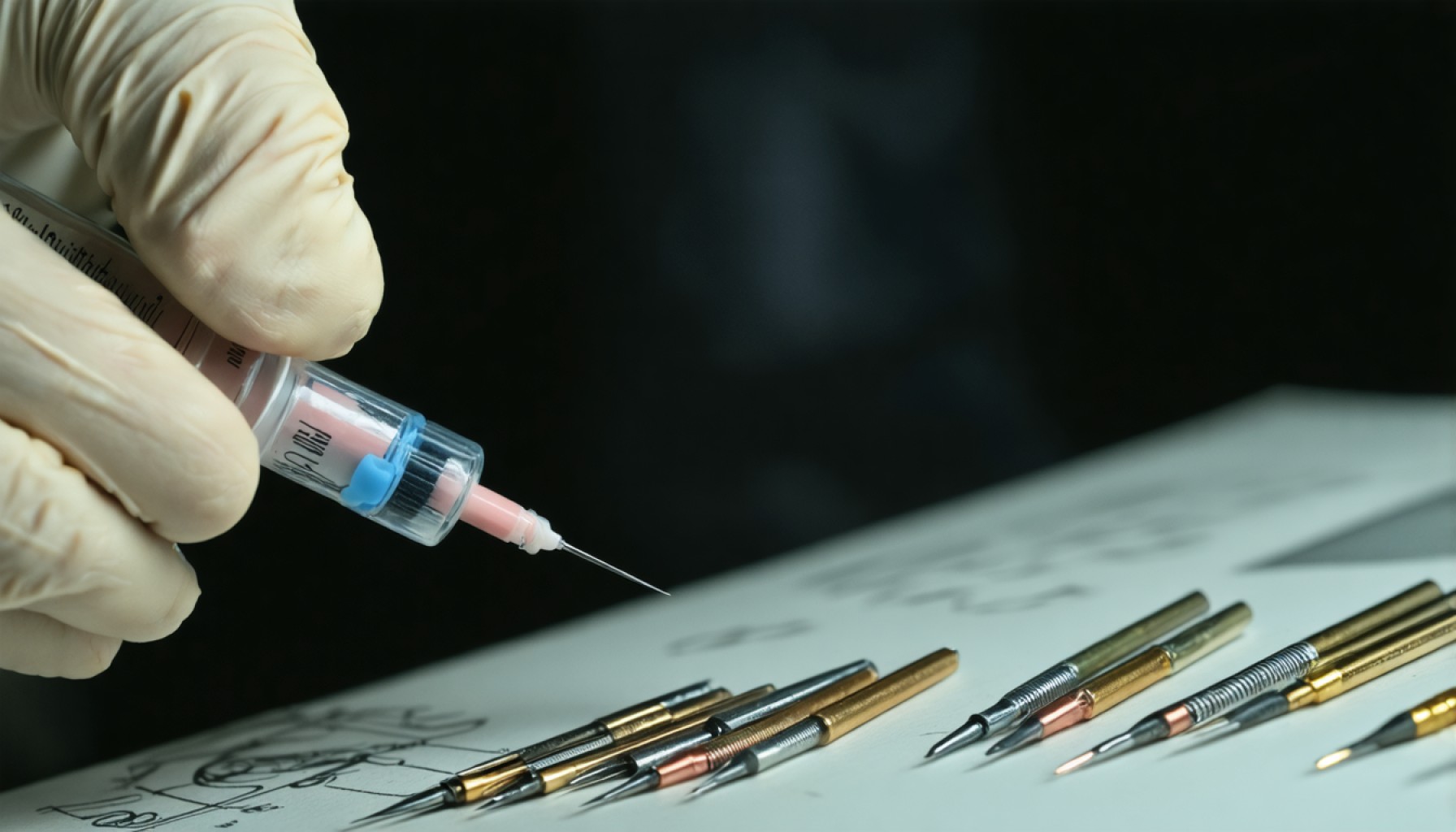- Tattoo needles are pivotal in the growing tattoo industry, driven by increased cultural acceptance and artistic demand.
- The global tattoo needle market is valued at $289.8 million in 2023, projected to grow to $403.8 million by 2031.
- Technological advancements and strict safety standards enhance tattoo equipment quality, boosting consumer trust.
- Advanced manufacturing, like laser-cutting and better sterilization, ensures precision and reliability in tattoo needles.
- Challenges include counterfeit products and complex regulations, which increase production costs.
- Innovation in needle design and materials aims to improve accuracy and reduce discomfort.
- The global tattoo trend presents new opportunities, with advancements set to meet evolving artistic demands.
A palpable buzz shadows the tattoo parlors as whimsical designs inked on skin become a universal canvas of self-expression. Once whispered about in dimly lit rooms, tattoos have charged into the limelight, propelled by a surge in cultural acceptance and artistry. This newfound fervor demands not just exemplary creativity but also top-notch equipment, thrusting tattoo needles onto center stage.
Trailing this artistic revolution, the global tattoo needle market has witnessed a robust valuation of $289.8 million in 2023, with promising forecasts to soar to $403.8 million by 2031. Driving the needle’s spike in popularity is a mix of technological finesse and stringent safety standards, which have resurrected consumer trust. Advanced manufacturing techniques, such as laser-cutting and enhanced sterilization, have transformed these tools into icons of precision and reliability. For tattoo aficionados and artists alike, this translates to a safer, sharper, and more vibrant experience.
The rising tide of this market isn’t without its challenges. A deluge of counterfeit products threatens to tarnish its meticulously built reputation, while complex regulations impose hefty production costs. Yet, the quest for innovation persists unyielded: sleeker designs and superior materials are continuously sought to finesse accuracy and curb discomfort.
A global embrace of tattoos not only fuels demand but cracks open a trove of untapped opportunities. As tattoos nestle deeper into cultural consciousness, the evolution and enhancement of tattoo needles will likely meet the escalating artistic demands head-on. The intersection of artistry and technology beckons—a sector poised to redefine how stories are woven into the skin, one needle at a time.
Why Tattoo Tattoos are No Longer a Taboo: A Dive into the Tattoo Needle Industry
How-To Steps & Life Hacks: Choosing the Right Tattoo Needle
1. Identify the Type of Tattoo: Before selecting a needle, understand the type of tattoo design you want. Different designs need different needles; for example, fine lines require a different needle than shading designs.
2. Understand Needle Configurations: Learn about needle groupings like liners, shaders, rounds, and flat needles. Liners are typically used for outlines, while magnums are perfect for shading.
3. Check Needle Quality: Look for high-quality needles made with surgical-grade stainless steel and are sterilized to prevent infections.
4. Test Needles: For artists, practicing with various needle types on synthetic skins can help determine the best fit for their style and designs.
Real-World Use Cases
Tattoo needles aren’t limited to traditional body art. They’re pivotal in medical micropigmentation, helping in procedures like scar camouflage, eyebrow embroidery, and even in some paramedical practices.
Market Forecasts & Industry Trends
The tattoo needle market, with a current valuation at $289.8 million, is driven by innovation in design and safety, projecting an estimated growth to $403.8 million by 2031. A significant trend is the shift towards eco-friendly materials and single-use sterilized needles, reflecting a growing awareness for environmental sustainability within the industry.
Reviews & Comparisons
Comparing popular brands like Cheyenne and EZ can be insightful for quality. Cheyenne is renowned for its precision, often preferred by professionals for intricate art. Conversely, EZ needles are praised for affordability and accessibility for beginners.
Controversies & Limitations
The presence of counterfeit needles on the market poses significant risks to safety and quality, leading to potential health issues for clients and legal disruptions for artists. It’s crucial to purchase from credible suppliers with verifiable certification.
Features, Specs & Pricing
Top-notch needles boast precision laser-cut tips, varying grouping configurations, and are pre-sterilized. Prices range widely: starter kits might cost around $50, while professional-grade supplies can exceed $200.
Security & Sustainability
Tattoo needles now often incorporate anti-rolling technology and low waste packaging, contributing to a safer and more planet-friendly approach. Artists are encouraged to use biodegradable sterilization options where possible.
Insights & Predictions
As customization and personalization become central to tattoos, innovations like smart needles that record and replicate needle movement for consistency are on the horizon.
Pros & Cons Overview
Pros:
– High precision capabilities
– Advanced safety standards
– Increased accessibility
Cons:
– Prevalence of counterfeit products
– Higher production costs
– Regulatory complexities
Actionable Recommendations
– For Artists: Collaborate with reputed suppliers and stay updated with the latest technological advances to enhance safety and quality.
– For Consumers: Verify the authenticity of needles used and consult with artists about their equipment standards to ensure safety.
For more insights and to explore the tattoo industry’s latest, visit the official pages of leading brands like Cheyenne Tattoo and the emerging EZ Tattoo.
Embrace the art form with respect for craftsmanship and safety—your skin deserves nothing less.
